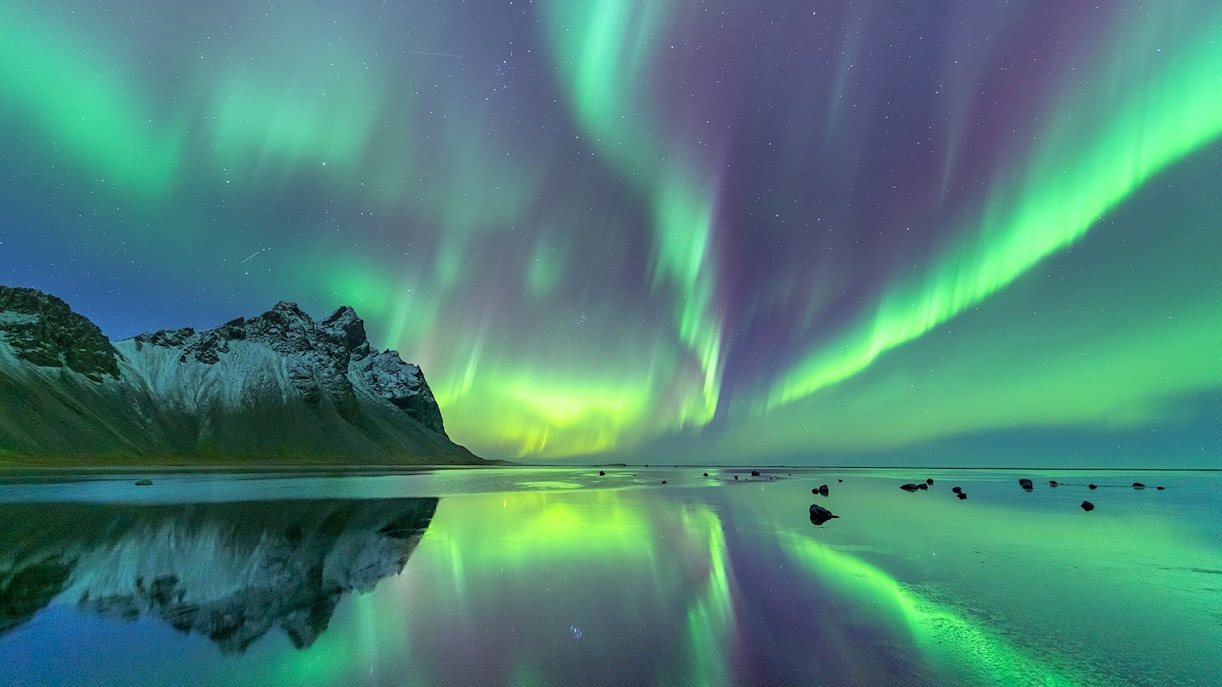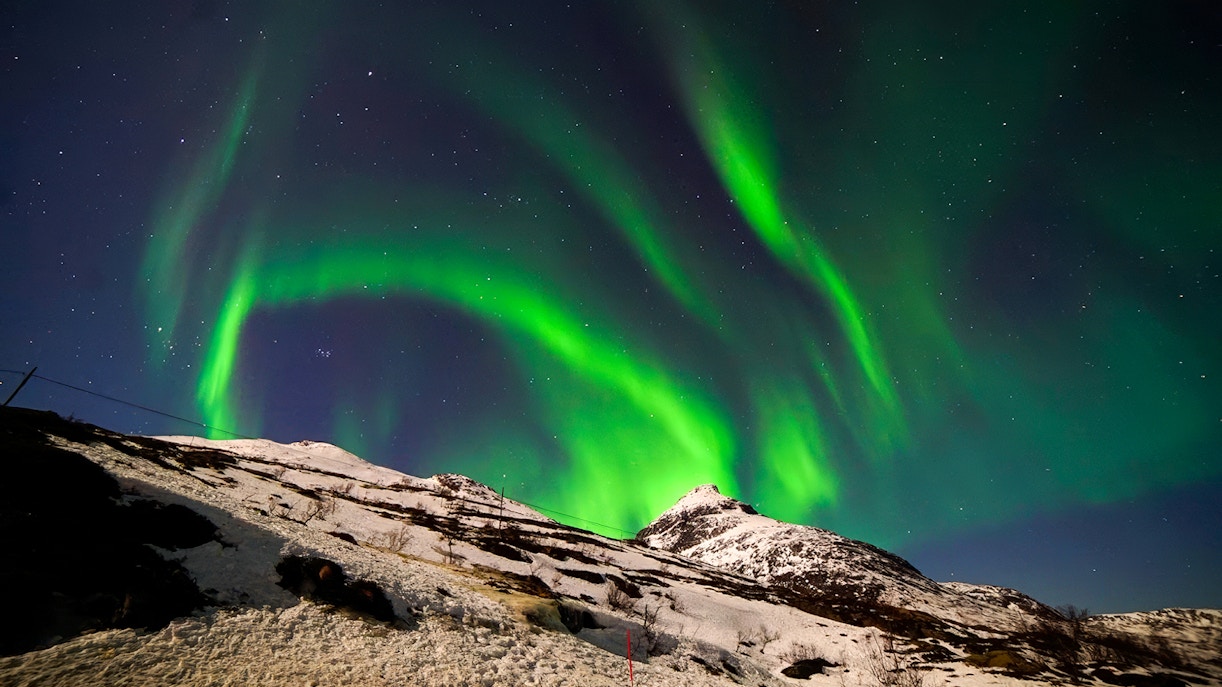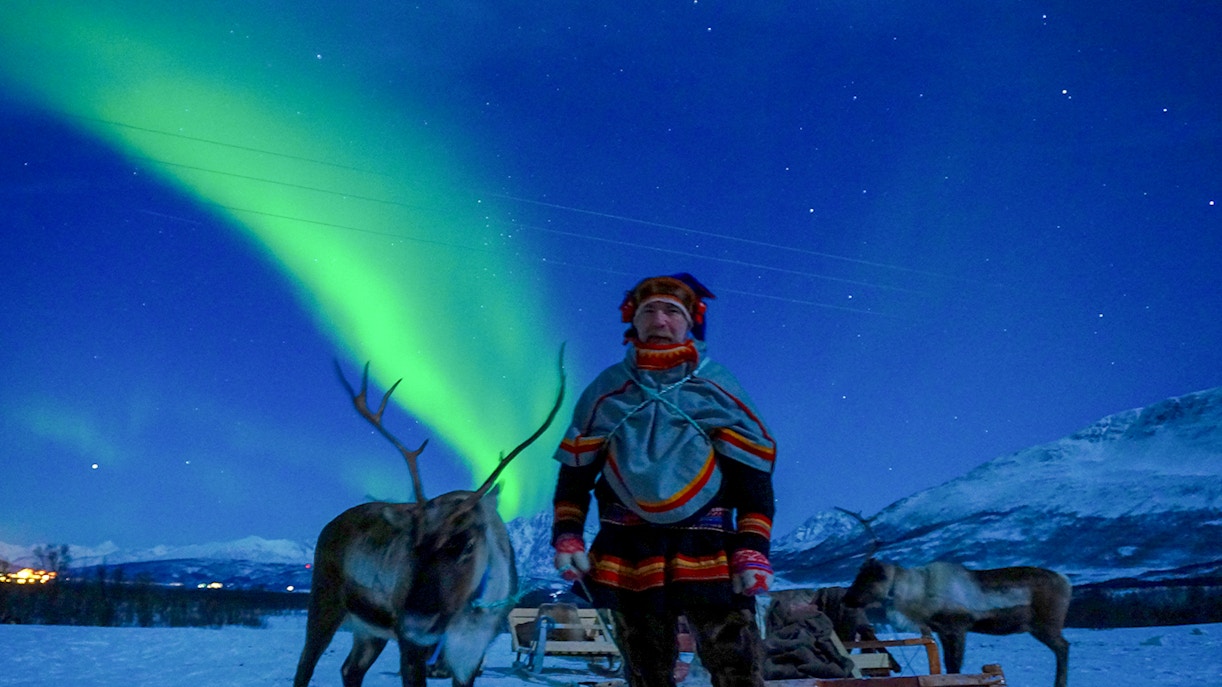Everything You Need to Know About the Northern Lights in Tromso
What are the Northern Lights?

The Northern Lights are stunning light displays that occasionally illuminate the night skies in brilliant shades of green, purple, red, and pink near the polar regions. These lights shimmer in the sky—sometimes for hours—quickly changing shape from river-like bands to curtains, arcs, or spirals.
In 1619, the Italian astronomer Galileo Galilei called this phenomenon Aurora Borealis after the Roman goddess of dawn, Aurora, and the Greek god of the north wind Borealis. Translating to the dawn of the North, this auroral activity has piqued the interest of scientists for years.
Interesting facts about the Northern Lights
Book your Northern Lights tour in Tromso
The various shapes of the Northern Lights

The Northern Lights appear in different shapes and sizes depending on the time of night and their intensity. Early in the evening, you may see a graceful arc stretching across the sky, but the patterns become more dynamic with increased auroral activity.
- Arc: Often seen early in the night, this grand arch extends from east to west, with sharp edges at the bottom and fuzzy ones on the top. It can span over 1,000 km but has a narrow width of just 100 m.
- Aurora Band: The band is similar to an arc but twisted as spirals or waves. It's like watching a ribbon of light curl through the sky.
- Corona: When you stand directly beneath the Aurora, in alignment with the Earth's magnetic field, the lights can appear as rays radiating outward from a central point. This phenomenon occurs during peak auroral activity, resulting in a bright display resembling a corona or crown.
- Rays: The rays appear as vertical streaks of light and move in line with the Earth's magnetic field, often giving the Aurora a curtain-like appearance.
Cultural significance of the Northern Lights

Beyond their scientific explanation, the Northern Lights resonate with the cultural landscape of Tromso and Scandinavia.
- Local legends and myths
In Sami mythology, the lights are believed to be ancestral spirits, guiding reindeer herders, or even heralding omens. Some Norse legends believe that the Northern Lights are reflections of the Valkyries' armor. Indigenous communities in Greenland see the lights as the spirits of animals or loved ones playing in the sky.
- Inspiring art, folklore, and storytelling
The Northern Lights have inspired countless works of art, music, and storytelling throughout history. Sami traditions feature the lights in folklore, while artists and poets use Aurora as a symbol of mystery, spirituality, natural beauty, adventure, and other philosophical concepts.
Northern Lights festival TromsoWhat makes Tromso one of the best places to see the Northern Lights?
Frequently asked questions about the Northern Lights
It's not necessary to book a Northern Lights tour in Tromso, but booking one will increase your chances of spotting the lights. Local guides accompany you on your Tromso Aurora Borealis tour. They know the best viewing locations and can offer insights into the science and legends surrounding the phenomenon. Additionally, these guides are skilled at reading weather patterns and aurora forecasts, allowing them to predict where and when the lights are most likely to appear. This forecasting maximizes your chances of a successful sighting.
The best time to see the Northern Lights in Tromso is between late September and early April. During these months, the long nights and often clear skies increase your chances of a spectacular display.
The best places to see the Northern Lights from Tromso are outside the city, away from light pollution. Popular spots include Ersfjordbotn, Kattfjordvatnet, and Grøtfjord. Consider booking a guided tour as the guides will take you to the best locations to see the lights and share fascinating insights about them.
While winter (December-February) offers the best chances due to longer nights, the Aurora Borealis in Norway can sometimes be seen as early as September and as late as April in Tromso.
The Tromso Northern Lights can last anywhere from a few minutes to several hours. While the lights often appear as brief bursts of color, they remain visible longer during periods of high solar activity.
You can opt for Northern Lights tours that offer opportunities for reindeer sledding and Sami culture exploration. Beyond Northern Lights tours, you can engage in activities like dog sledding and whale watching. You can also visit popular attractions like the Polar Museum and Arctic Cathedral or explore the indigenous Sami culture and traditions.
While Tromso offers excellent conditions for seeing the Northern Lights from late September to early April, they do not appear every night. The visibility of the Norwegian Aurora Borealis depends on factors like solar activity, light pollution, and weather conditions. Low solar activity, high light pollution, and extensive cloud cover can decrease the chances of seeing the Northern Lights.
No, the Northern Lights are a natural light display caused by solar particles colliding with Earth's atmosphere. They pose no harm to observers.





